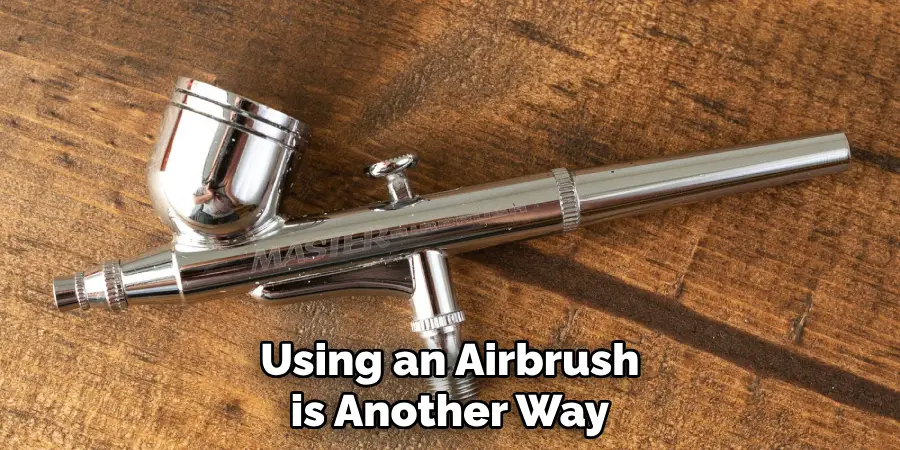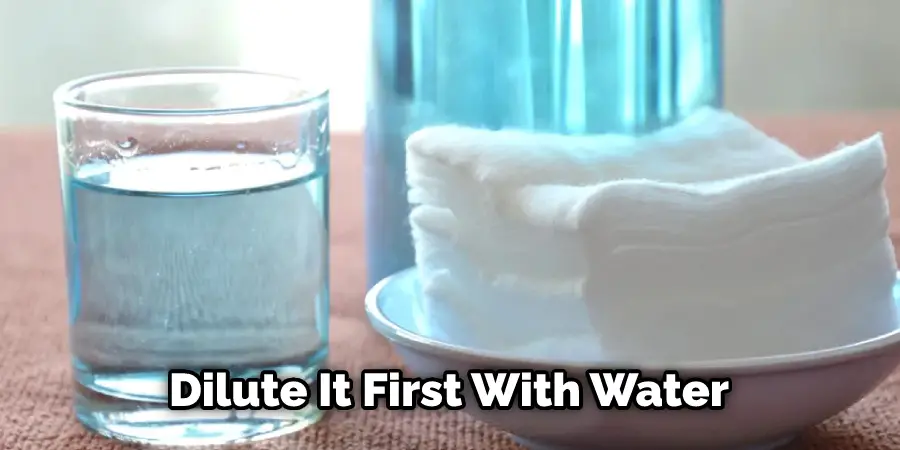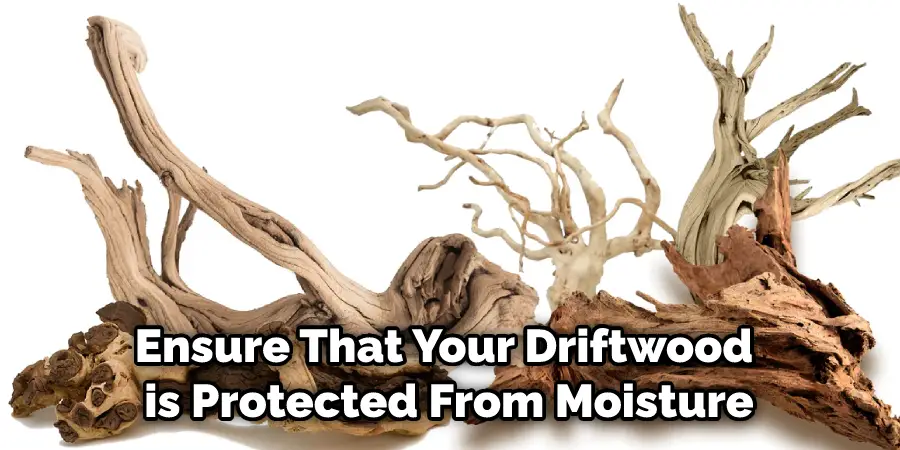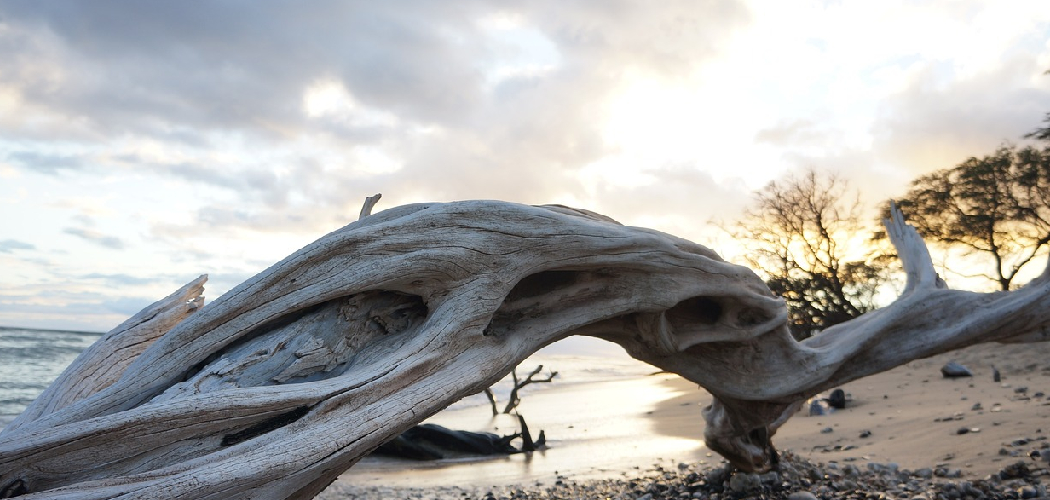Do you have a piece of driftwood that’s looking less than pristine? Maybe it has a yellowish hue? If so, then your driftwood may be suffering from tannin staining. Tannins are found in softwoods and create an unattractive color when exposed to water, but luckily, this is easily remedied Here, we’ll provide step-by-step instructions on how to remove tannins from driftwood so that it looks as good as new!

Keep reading to discover the most efficient way to get rid of those pesky tannins once and for all! Tannins are a common problem for people dealing with driftwood, and it is often difficult to know how to best remove them. Tannins can give the water an oily or brown hue and have the potential to alter its pH, making it unsuitable for some aquatic life.
Fortunately, there are several effective techniques you can use to get rid of tannins from driftwood and return your aquarium or pond’s water back to its crystal-clear state. In this blog post, we will be discussing how to quickly and easily remove tannins from driftwood so that you can enjoy all the benefits of adding natural décor without any unwanted discoloration.
Why is It Important to Remove Tannins From Driftwood?
1. To Avoid Color Stain
Tannins are known to stain a driftwood’s surface and the surrounding area, which can be unsightly and difficult to remove. Thus, it is important to remove tannins from driftwood before using them in an aquarium or other applications.
2. To Remove Unpleasant Smells
Tannins also produce an unpleasant smell that is released when driftwood is placed in water. If left unchecked, this smell can spread throughout the tank and be a source of irritation. Removing tannins prior to placing driftwood in your aquarium will help to eliminate this problem.
3. To Avoid Unwanted Contaminants
Tannins are known to contain unwanted contaminants such as bacteria and fungi. These can be dangerous to the health of your fish and other aquatic life, so it is essential to remove tannins from driftwood before placing them in an aquarium.
4. To Improve Water Quality

By removing tannins from driftwood, you can help to improve the quality of your tank’s water. Tannins are known to cause water discoloration, reduce oxygen levels in the tank, and increase acidity. Removing these compounds from your driftwood will help keep your tank’s water healthy and balanced.
Ultimately, it is important to remove tannins from driftwood in order to maintain a healthy and safe environment for your fish and other aquatic life. Removing these compounds will help avoid unwanted color stains, unpleasant smells, dangerous contaminants, and poor water quality. With the right methods, you can easily get rid of tannins in your driftwood and keep your aquarium clean and healthy.
16 Ways About How to Remove Tannins From Driftwood
Removing tannins from driftwood is not a difficult process, but it does require patience and care. There are several methods for doing this, and each one has its own advantages and disadvantages. A few ways are:
1. Boiling

This is one of the oldest and most popular methods. Heat a pot of water and drop the driftwood into it, making sure to keep the temperature at a low simmer. Boil the wood for 15-20 minutes, then drain the liquid out each time before adding fresh water for another boil session.
2. Soaking
Another popular method is to soak the driftwood in the water. This can be done for up to several days, depending on how much tannin needs to be removed. The water should be changed often, and the driftwood should be moved around while it’s soaking so that all of the wood’s surfaces are exposed to the freshwater.
3. Baking
Baking is also an option and can be done easily in the oven at a low temperature. To do this, place the driftwood on a lined baking sheet, then bake it for 1-2 hours until the tannins have been cooked off.
4. Organic Solutions
Organic substances such as vinegar or lemon juice can also be used to remove tannins from driftwood. Simply mix the solution with water and let the wood soak in it until most of the tannins are gone. Be careful not to soak the wood too long, as this could damage it.

5. Chemical Solutions
Chemical solutions such as bleach can also be used, but they should only be done so with extreme caution – and only if all other methods fail. Bleach can easily cause irreparable damage to the driftwood, so use it sparingly and make sure that it’s properly diluted in water first.
6. Sandpaper
Sandpaper is another option for those who want to remove tannins from driftwood. Rub it in with light pressure, then wipe off the residue before repeating the process on another portion of the wood. Make sure to use a very fine grit and to keep the pressure light.
7. Paasche Airbrush
Using an airbrush is another way to remove tannins from driftwood. The airbrush should be adjusted so that it’s spraying at low pressure, then moved over the surface of the wood until all of the tannins have been removed.

8. Baking Soda
Baking soda can be used to remove tannins from driftwood too. Mix a small amount of the baking soda with water, then use either a brush or cloth to rub it into the wood’s surface until all of the tannins are gone.
9. Ammonia
Ammonia can be used in the same way as baking soda, just make sure to dilute it first with water. This will help to avoid any potential damage to the wood’s surface that too much ammonia might cause. This can be done in a similar fashion to sandpaper.
10. Oxalic Acid
Oxalic acid can also be used, but it should be handled with care as it’s a caustic substance. Mix this with water and use either a brush or cloth to rub the mixture into the wood until all of the tannins are gone.
11. Hydrogen Peroxide
Hydrogen peroxide can be used to remove tannins from driftwood, too; just make sure to dilute it first with water. Use a brush or cloth to rub it in, then wipe off the residue before repeating the process on another portion of the wood.

12. Salt
Salt is another option that can be used to help remove tannins from driftwood. Mix the salt with water and rub it into the wood’s surface until all of the tannins are gone. Be sure to wipe off any residue before moving onto a new portion of the wood.
13. Citric Acid
Citric acid can also be used, but it should be handled with care as it’s a caustic substance. Mix this with water and use either a brush or cloth to rub the mixture into the wood until all of the tannins are gone.
14. Dishwashing Detergent
Using dishwashing detergent can also help to remove tannins from driftwood. Simply mix a small amount of the detergent with water and use either a brush or cloth to rub it into the wood’s surface until all of the tannins are gone. Be sure to wipe off any residue before moving onto a new portion of the wood.
15. Hot Water
Hot water can also be used to help remove tannins from driftwood. Simply fill a bucket with hot water, then submerge the wood in it until all of the tannins are gone. Be sure to wipe off any residue before moving onto a new portion of the wood.
16. Activated Charcoal Powder
Sprinkling activated charcoal powder over the driftwood can also help to remove tannins. Simply sprinkle a small amount of the powder over the wood, then brush it in with a damp cloth until all of the tannins are gone.
These are just some of the many ways that you can use to remove tannins from driftwood. If none of these methods work, it may be necessary to turn to more drastic measures such as chemical baths or bleaching. However, these should only be done with caution and extreme care in order to avoid causing any permanent damage to the driftwood. No matter which method you choose, remember that patience is key when it comes to removing tannins from driftwood. With the right approach and a little bit of effort, you can easily get your driftwood looking as good as new in no time!
Frequently Asked Questions
What Precautions Should I Take Before Removing Tannins From Driftwood?
Before removing tannins from driftwood, it is important to take safety precautions. Wear protective eyewear and gloves to protect your skin and eyes from staining or irritation. Additionally, make sure you are working in a well-ventilated area with plenty of fresh air, and use a dust mask if necessary.
Can I Remove Tannins From Driftwood With Household Products?
Yes, you can remove tannins from driftwood with some household products. Common items like white vinegar, hydrogen peroxide, and baking soda are all known to be effective at removing tannins. When using these items, it’s important to follow the manufacturer’s instructions and wear protective eye and skin gear.
What Are Some Professional Solutions To Remove Tannins From Driftwood?
If you are looking for a more professional solution to removing tannins from driftwood, there are several commercial products that can help. These include chemicals like sodium hydroxide, which can help break down the tannins and make them easier to remove. Additionally, there are products like driftwood brighteners that can be used to help restore the natural color of your driftwood after removing the tannins. Finally, it’s important to follow all safety instructions when using these professional solutions.
Do I Need To Soak The Driftwood In Solutions?
Yes, when removing tannins from driftwood it is important to soak the wood in a solution. This can help break down the tannins more effectively and make them easier to remove. It is recommended that you soak the driftwood for at least 24 hours and then rinse thoroughly with clean water. If you are using a professional solution, make sure to follow the instructions for how long to soak and rinse accordingly.
What Should I Do After Removing Tannins From Driftwood?
Once you have successfully removed tannins from your driftwood, it is important to take care of the wood properly. Make sure that you rinse the wood thoroughly after soaking it in a solution and dry it completely. Additionally, you may want to seal or waterproof the driftwood for extra protection.
This will help ensure that your driftwood is protected from moisture and will maintain its natural beauty. Removing tannins from driftwood can be a time-consuming process, but with some patience and the right tools, you can restore your driftwood to its natural beauty. By taking the time to properly prepare and protect yourself, as well as following instructions for using household or professional solutions, you can successfully remove tannins from driftwood. With proper care and maintenance, your driftwood will retain its beautiful appearance for years to come.

Conclusion
Now you know many ways how to remove tannins from driftwood! With all the tips and tricks given in this blog post, we hope that you have a better understanding of how to remove tannins from driftwood. Removing tannins is easy enough as long as you are properly prepared and know what you’re doing. We’ve provided some great alternatives for removing tannins without introducing foreign substances and chemicals into your tank – boiling water or letting the driftwood soak can be wonderful solutions, though they may take longer.
We also discussed bleaching in cases where it becomes necessary, making sure to thoroughly rinse afterward with dechlorinated water or leaving the wood to soak in dechlorinated water for approximately 24 hours. In addition, we’ve addressed the importance of steaming tanks when first introducing a new driftwood piece onto your aquarium. No matter which method you choose to use, always keep safety as top priority in order for both you and your fishy friends to stay healthy!


